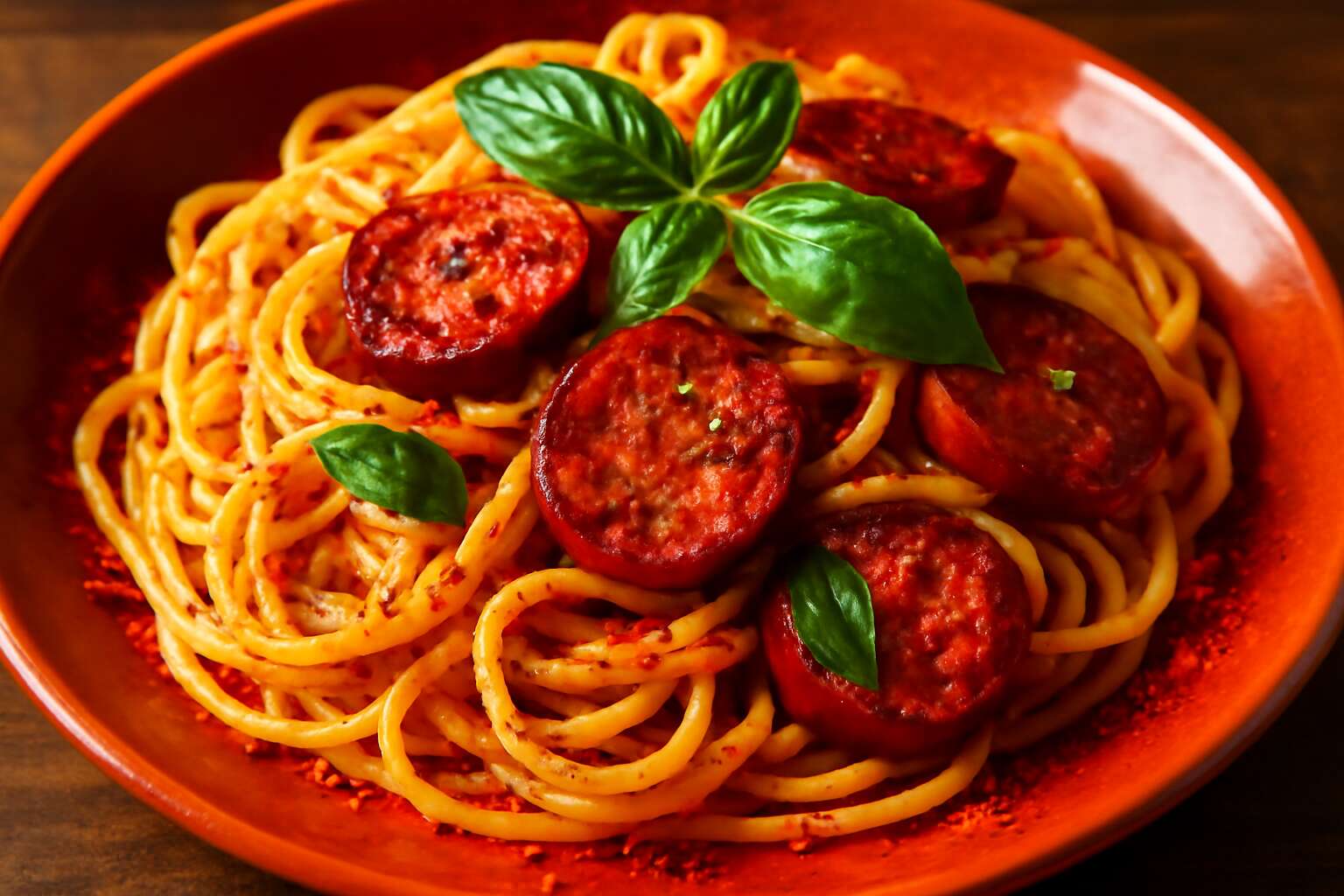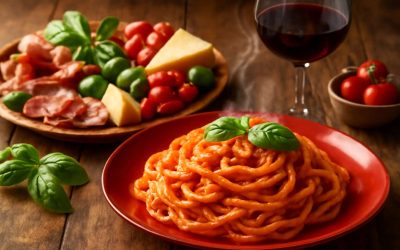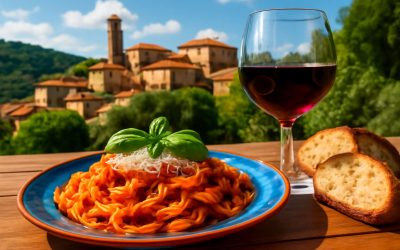Understanding the Spiciness of Italian Cuisine
Variations within Italian Cooking – Exploring regional differences in flavor profiles
Italian cuisine, often celebrated for its comforting flavors and aromatic herbs, reveals a surprising versatility when it comes to spice. Within the diverse tapestry of Italy’s regional palettes, the question of whether can Italian food be spicy emerges as a fascinating inquiry. In the southern regions, such as Calabria and Sicily, fiery chili peppers are woven into dishes with fervor, transforming simple ingredients into bold, piquant masterpieces.
Exploring regional differences, one finds that the northern provinces tend to favor delicate, herbaceous flavors over heat, while central Italy offers a harmonious balance—sometimes hinting at spiciness but never overpowering. The southern areas, however, embrace spice as an intrinsic part of their culinary identity. For example, the use of peperoncino adds a tantalizing kick that can elevate even the most humble pasta or seafood dish, prompting the question: can Italian food be spicy? Absolutely, and it often is, depending on where you find yourself in Italy’s flavorful landscape.
In essence, the answer varies with geography and tradition, making Italian cuisine a dynamic mosaic where spice is not just an option but a regional signature. It is this very variability that keeps the culinary journey through Italy endlessly enchanting and ever-surprising.
Traditional Ingredients – Herbs and spices commonly used in Italy
Italian cuisine, renowned for its fragrant herbs and delicate flavors, might seem like a bastion of subtlety at first glance. Yet, beneath this serene surface lies a vibrant spectrum of spiciness that can ignite even the most reserved palate. The traditional ingredients that lend Italian dishes their distinctive character include a variety of herbs and spices, each adding depth and nuance. While basil, oregano, and thyme often take center stage, the fiery allure of chili peppers—especially peperoncino—introduces an unexpected heat that can surprise those unfamiliar with Italy’s more passionate culinary traditions.
In regions such as Calabria and Sicily, the use of chili peppers is not just common but celebrated, transforming humble ingredients into boldly spicy masterpieces. These fiery peppers are often incorporated into pasta sauces, seafood dishes, and antipasti, creating a tantalizing contrast to the otherwise aromatic and herbaceous profile. So, can Italian food be spicy? Absolutely! The answer isn’t simply a yes or no but a vibrant yes that varies with each region’s culinary heartbeat.
Understanding the traditional ingredients that contribute to Italian spiciness reveals a fascinating layer of culinary history. The use of chili peppers, garlic, and black pepper has roots in ancient trade routes and Mediterranean spice exchanges. Sometimes, chefs and home cooks alike might opt for
- peperoncino
- crushed red pepper
- hot paprika
to elevate their dishes, weaving a fiery thread through Italy’s diverse palate. This blend of herbs and spices exemplifies how Italian food can be both comforting and unexpectedly fiery, depending on the regional or personal touch.
The Role of Pepper and Chili – Historical use of chili peppers in Italian dishes
Throughout history, chili peppers have woven their fiery threads into the fabric of Italian cuisine, challenging the stereotype of Italy as solely a land of subtle, herbal flavors. The ancient trade routes brought these pungent pods from the New World into the heart of the Mediterranean, where they gradually gained acceptance and popularity. Today, their presence in regional dishes signifies more than just heat; it embodies a cultural exchange that enriches Italy’s culinary narrative.
In regions like Calabria and Sicily, chili peppers are not merely an ingredient but a symbol of culinary passion. Their incorporation into pasta sauces, seafood, and antipasti reveals a nuanced layer of flavor—fiery yet harmonious. The use of crushed red pepper, often called peperoncino, exemplifies how Italian cuisine can be both comforting and unexpectedly spicy. It’s a testament to the fact that, yes, can Italian food be spicy? The answer is a vibrant yes—regional traditions and personal preferences ensure that spice finds a place in Italy’s diverse culinary landscape.
- The historical roots of chili peppers in Italy trace back to ancient spice exchanges, blending new flavors into traditional recipes.
- Today, their presence continues to evolve, with chefs and home cooks alike embracing the fiery potential of peppers like peperoncino and hot paprika.
Italian Dishes That Can Be Made Spicy
Pasta Dishes – Spicy Arrabbiata and other flavorful sauces
Italian cuisine, often celebrated for its melodic simplicity, harbors an unexpected fiery soul. While many might question, can Italian food be spicy, the answer is a resounding yes. Dishes like spicy arrabbiata showcase how a modest amount of chili can elevate pasta into a tantalizing symphony of heat and flavor. This sauce, with its fiery kick, exemplifies Italy’s ability to balance boldness with finesse. It’s a testament to the cuisine’s versatility—where tradition meets a daring twist.
Beyond arrabbiata, numerous Italian dishes embrace spice, transforming the dining experience into something both comforting and invigorating. For those seeking a more nuanced heat, flavorful sauces infused with garlic, basil, and chili flakes create layers of complexity. Whether it’s a spicy puttanesca or a fiery nduja spread, these dishes highlight that questions like can Italian food be spicy are rooted in a rich history of culinary innovation. Each bite reveals Italy’s capacity for passion—both in its flavors and in its storytelling through food.
Pizza Variations – Adding chili-infused toppings or spicy sauces
In the shadowed corridors of culinary tradition, the question lingers—can Italian food be spicy? The answer is a whisper carried on a gust of fiery passion. Among the most compelling evidence lies in the transformation of classic pizzas, where the mundane yields to a daring infusion of heat. Spicy toppings, like fiery chili-infused salami or a drizzle of chili oil, turn a simple pizza into an inferno of flavor, awakening senses long dormant.
For those craving a more intense experience, spicy sauces elevate the dish into a macabre ballet of flavors. Imagine melting mozzarella crowned with a robust spread of nduja or a pungent puttanesca sauce, both bursting with fiery complexity. These variations—where chili flakes meet fragrant herbs—prove that can Italian food be spicy is not merely a myth but an art form rooted deeply in culinary innovation. The heat isn’t just a blaze; it’s a dance of tradition and daring, inviting a new realm of tantalizing possibilities.
Seafood and Meat Dishes – Incorporating chili peppers for heat
In the heart of Italy’s culinary landscape, the question persists—can Italian food be spicy? The answer isn’t just a yes or no; it’s a tantalizing journey into a world where tradition meets bold experimentation. Seafood and meat dishes, often celebrated for their delicate flavors, can be transformed into fiery masterpieces by incorporating chili peppers. Imagine a vibrant seafood fra diavolo, where the heat from chili flakes elevates the briny sweetness of the ocean’s bounty, creating a symphony of spice and freshness.
For meat lovers, dishes like spicy sausage n’ peppers or fiery chicken cacciatore showcase how a pinch of chili can ignite a familiar recipe into an intense, layered experience. The secret lies in choosing the right chili peppers—be it the smoky note of chipotle or the sharp punch of red chili—each adding its own character to the dish. This hints at an intriguing culinary truth: can Italian food be spicy? Absolutely, especially when chefs dare to blend tradition with a dash of daring heat. The result is a captivating fusion of flavors that defy expectations and thrill the palate.
Appetizers and Antipasti – Spicy bruschetta and marinated vegetables
Italian cuisine is renowned for its delicate balance of flavors, yet the question remains—can Italian food be spicy? The answer is a resounding yes, especially when chefs experiment with bold ingredients like chili peppers. Appetizers and antipasti are prime candidates for spicing up, transforming simple starters into fiery delights that excite the palate.
Imagine a slice of crusty bread topped with spicy bruschetta, where ripe tomatoes mingle with a hint of red chili flakes, creating an irresistible combination of heat and freshness. Similarly, marinated vegetables, kissed with chili-infused olive oil, offer a vibrant contrast to traditional flavors. These dishes showcase how a touch of spice can elevate Italian appetizers from mild to memorable.
For those curious about the spicy side of Italy, it’s worth noting that regional variations often influence the heat level—Sicilian dishes, for instance, tend to embrace more chili, infusing their antipasti with fiery character. Whether through
- red pepper flakes
- fresh chili slices
or chili oil, the answer to can Italian food be spicy lies in the creative use of ingredients that add depth and excitement without overpowering the essence of Italian cuisine. The secret is in balancing tradition with daring heat, making each bite an adventure.
How to Make Italian Food Spicy
Using Fresh Chili Peppers – Tips for selecting and preparing chilis
When pondering whether can Italian food be spicy, the answer is a resounding yes—when you know how to harness the fiery potential of fresh chili peppers! The secret lies in selecting chilis that bring both vibrancy and heat to your culinary creation. Opt for vibrant red or green chilies like jalapeños, cayenne, or Italian peppers such as peperoncino, which are renowned for their pungency and flavor. These peppers can transform a traditional dish into a fiery masterpiece, elevating the sensory experience beyond the familiar.
Preparation is equally crucial. Carefully wash and deseed the chilies to control the intensity of heat. For a milder kick, remove the seeds and membranes, which hold much of the capsaicin—the compound responsible for spiciness. Conversely, leaving some seeds intact will amplify the heat, perfect for those daring to explore how spicy can Italian food be. Incorporate chopped chilies into oils or simmer them directly into sauces to infuse heat evenly. Remember, a little goes a long way in creating bold, spicy Italian dishes that tantalize the palate and ignite the senses!
Infusing Oils and Sauces – Creating spicy oils to add flavor
Infusing oils and sauces with chili peppers is an enchanting way to elevate Italian cuisine into a fiery feast! When pondering whether can Italian food be spicy, the answer is often a delicious yes—thanks to the magic of spicy oils and sauces. By carefully creating chili-infused oils, you unlock a world of bold flavors that can transform even the simplest pasta or pizza into a sensory adventure.
Start by gently heating high-quality olive oil and adding your favorite fresh chili peppers—jalapeños, peperoncino, or cayenne all work beautifully. As the oil warms, the capsaicin from the chilies melds into the oil, creating a potent elixir of heat and aroma. Allow the mixture to simmer slowly, ensuring the heat infuses evenly. This process not only deepens the flavor but also preserves the fiery essence of the peppers, ready to spice up your dishes at any moment.
Once cooled, strain the oil to remove the chili pieces, or leave them in for an extra punch. Use this vibrant chili oil to dribble over grilled vegetables, drizzle on a cheesy pizza, or swirl into rich tomato sauces. For a more structured approach, consider making a spicy sauce with the infused oil as a base, combining it with garlic, herbs, and a splash of vinegar. This creates a versatile condiment that can be stirred into soups or spread onto crusty bread, adding layers of heat and depth to traditional Italian flavors.
Remember, a little chili oil goes a long way—start with small amounts and taste as you go. The thrill of crafting your own spicy Italian creations lies in balancing heat with authentic ingredients, ensuring that each dish offers a tantalizing glimpse into how spicy can Italian food truly be. The power of infused oils and sauces opens a realm of possibility, making every bite an adventure into fiery Italian artistry!
Balancing Heat and Flavor – Maintaining authentic taste while adding spice
In the vibrant tapestry of Italian cuisine, the question often arises: can Italian food be spicy? The answer is an emphatic yes—when approached with finesse and respect for tradition. Spiciness, once considered a rarity in classical Italian dishes, now finds its rightful place alongside authentic flavors, thanks to the thoughtful incorporation of chili peppers and fiery oils. The secret lies in balancing heat with the delicate nuances of Italian herbs and ingredients, ensuring that the spice enhances rather than overwhelms the dish.
Creating spicy Italian food involves more than simply adding chili; it’s about infusing flavors harmoniously. By carefully blending chili-infused oils into sauces or drizzling them over pizza and pasta, chefs and home cooks alike can craft dishes that excite the palate. The art is in moderation—starting with small quantities of chili and gradually increasing until the perfect balance is achieved. This method preserves the authentic taste while allowing the heat to elevate the culinary experience, proving that yes, you can enjoy Italian food that’s delightfully spicy.
Adjusting Spice Levels – Guidelines for customizing heat levels
Spicing up Italian cuisine is no longer confined to the borders of tradition; it’s an art form that invites experimentation and personal expression. When pondering can Italian food be spicy, the answer resonates with a nuanced yes, provided the heat is integrated with finesse. Adjusting spice levels is a delicate dance—too much chili can drown the subtle harmony of authentic ingredients, yet just enough transforms a familiar dish into a fiery masterpiece. The question of how to tailor this heat becomes essential for those seeking a balance that respects Italy’s culinary heritage while satisfying a craving for bold flavors.
To customize spice levels without compromising authenticity, chefs and home cooks often rely on a few guiding principles. First, start with small quantities of chili—be it fresh, dried, or infused oils—and gradually increase. This method ensures the heat remains a complement rather than an overpowering force. For an added layer of complexity, consider incorporating chili-infused oils into traditional recipes such as arrabbiata sauce or spicy seafood pasta. The infusion process melds heat with aroma, creating a depth of flavor that elevates the dish.
- Begin with a modest amount of chili, tasting frequently to gauge its impact.
- Use chili-infused oils for a controlled, even distribution of heat.
- Adjust the spice gradually—patience is key to mastering the perfect level of heat, especially when exploring can Italian food be spicy.
Ultimately, the secret lies in moderation and respect for Italy’s rich palette of herbs and spices. By thoughtfully adjusting spice levels, anyone can craft Italian dishes that tantalize the palate—proof that Italian food can indeed be spicy, and beautifully so.
The Balance of Spiciness in Italian Food
Flavor Compatibility – How spice complements traditional ingredients
Italian cuisine, renowned for its rich, layered flavors, may surprise many with its potential for spiciness. While traditionally associated with herbs like basil, oregano, and thyme, the question remains: can Italian food be spicy? The answer is a resounding yes—when balanced thoughtfully, heat can elevate the authentic ingredients without overpowering them. Spicy elements like chili flakes or fresh chili peppers can harmonize beautifully with classic Italian staples, creating a symphony of flavor that excites the palate.
In fact, the art of incorporating spice into Italian dishes hinges on maintaining that delicate equilibrium. For instance, fiery arrabbiata sauce exemplifies how chili can complement the tang of tomatoes and the richness of olive oil. The secret lies in moderation—adding just enough heat to awaken the senses without overshadowing the core flavors. This balance ensures that can Italian food be spicy remains a tantalizing question, opening doors to new culinary adventures within Italy’s beloved culinary tradition!
Cultural Acceptance – Perceptions of spicy Italian food worldwide
Across the vast tapestry of culinary traditions, few questions linger with as much intrigue as whether can Italian food be spicy. The perception of Italian cuisine as a realm of gentle, herb-infused flavors often shadows its potential for heat. Yet, beneath the surface of classic dishes lies a tantalizing secret—spice, when wielded with precision, can unlock new dimensions of flavor. It is not merely about adding chili but about weaving heat into the fabric of Italy’s beloved staples, transforming familiar tastes into something darker and more complex.
In the global culinary consciousness, spicy Italian dishes remain a seductive enigma. While regions like Calabria and Sicily have long embraced fiery elements, many still view Italian cuisine through a lens of subtlety and restraint. However, the truth whispers from the shadows—can Italian food be spicy? Absolutely. The secret resides in balance, where the heat enhances rather than eclipses the core ingredients. The subtle burn of chili flakes or a hint of fresh chili peppers can elevate a humble pasta or pizza into a symphony of contrasts, echoing the mysterious allure that makes Italian cuisine so endlessly fascinating.
Pairing Spicy Italian Dishes with Drinks – Wine and beverage options
Striking a harmonious balance between heat and traditional flavors is essential when exploring whether can Italian food be spicy. The right beverage pairing can elevate a fiery dish, transforming it into a sophisticated culinary experience. For those daring enough to indulge in spicy Italian dishes, selecting the perfect drink is crucial. A crisp white wine, such as a Vermentino or Pinot Grigio, offers refreshing acidity that cuts through the heat, providing relief while enhancing the dish’s complex flavors. Meanwhile, a light red like Chianti can complement the smoky undertones often present in spicy sauces.
For a more adventurous pairing, consider sparkling water infused with lemon or a chilled Prosecco, which balances the spiciness with its bubbly finesse. It’s worth noting that some traditional Italian beverages, like Limoncello or aromatic aperitifs, can act as palate cleansers between bites. Ultimately, the secret to pairing spicy Italian dishes lies in contrast—where the drink accentuates the heat without overpowering the authentic ingredients. As the culinary landscape continues to evolve, so does the understanding that can Italian food be spicy—proof that Italy’s gastronomic heritage embraces both subtlety and fiery passion in perfect measure.
Popular Spicy Italian Dishes and Recipes
Spicy Arrabbiata Pasta – Recipe and preparation tips
Spicy Italian dishes challenge the common perception that Italian cuisine is solely about rich, comforting flavors. In reality, can Italian food be spicy? Absolutely. One of the most iconic spicy Italian dishes is the Arrabbiata pasta—a fiery testament to Italy’s bold flavor profile. This sauce, traditionally made with garlic, tomatoes, and a generous splash of chili flakes, delivers a punch of heat that elevates any pasta dish from mundane to memorable.
Preparation tips for a perfect spicy Arrabbiata involve balancing the heat with the acidity of ripe tomatoes and the fragrant aroma of garlic. To infuse authentic spiciness, many chefs recommend using dried red chili flakes or fresh chilis, which can be adjusted to suit individual heat preferences. The key is to simmer the sauce slowly, allowing the chili’s flavor to meld seamlessly into the tomato base. This process not only creates a vibrant, spicy sauce but also ensures the heat is well integrated, making it a staple for those wondering if Italian food can be spicy.
For those eager to explore further, consider adding a touch of crushed chili or even a splash of chili oil to enhance the intensity. The versatility of spicy Italian recipes showcases the culinary creativity that defies stereotypes—highlighting that can Italian food be spicy is not just a possibility but a delicious reality for spice lovers around the world. Whether served over penne or linguine, spicy Arrabbiata remains a testament to Italy’s unexpected fiery side, inviting adventurous palates to discover a different dimension of Italian cuisine.
Spicy Italian Sausages – Varieties and cooking ideas
Spicy Italian dishes have long been cloaked in a veil of misconception—many assume that Italian cuisine is inherently mild and comforting. Yet, a surprising number of authentic recipes showcase a fiery side, prompting the question: can Italian food be spicy? The answer, quite definitively, is yes. From the zesty kick of spicy Italian sausages to the bold heat of Arrabbiata sauce, Italy’s culinary repertoire is rich with fiery delights that challenge stereotypes and tantalize taste buds.
One of the most popular spicy Italian dishes, spicy Italian sausages, exemplify this culinary boldness. Varieties range from the classic fennel-infused versions to those packed with chili flakes or fresh chilis for an extra punch. Cooking ideas abound—grill them alongside vegetables, crumble into pasta sauces, or serve with a side of crusty bread and a splash of spicy mustard. Their versatility proves that can Italian food be spicy is not just a rhetorical question but a culinary reality that deserves exploration.
Chili-Infused Olive Oil – Making and using at home
Many people wonder, can Italian food be spicy? The answer is a resounding yes. While traditional Italian cuisine is often associated with mild flavors, it also boasts a fiery side that’s equally authentic and delicious. Spicy Italian dishes like Arrabbiata pasta, spicy Italian sausages, and chili-infused oils demonstrate Italy’s bold approach to flavor. These dishes prove that spice can elevate the rich herbs and ingredients typical of Italian cuisine, creating a perfect balance of heat and taste.
One popular way to add spice to Italian cooking at home is by making chili-infused olive oil. This versatile condiment can be drizzled over pasta, used as a dipping oil, or added to marinades. To prepare it, simply heat good quality olive oil with fresh chili peppers—such as red chili flakes or sliced chilies—allowing the heat to meld with the oil. Once infused, it’s an easy way to bring authentic fiery flavors to any dish, showcasing the answer to can Italian food be spicy in a simple, flavorful way.
Regional Specialties – Examples from Calabria, Sicily, and Southern Italy
Across Italy’s diverse culinary landscape, one question persistently piques curiosity: can Italian food be spicy? While many associate Italy’s cuisine with delicate herbs and subtle flavors, regional specialties reveal a fiery side that’s just as authentic and compelling. In Calabria, for instance, fiery red chili peppers are woven into traditional dishes like ‘peperoncino’ pasta and spicy sausages, showcasing the boldness characteristic of Southern Italy. Sicily, with its vibrant fusion of flavors, offers dishes such as ‘pasta alla Norma’ with a spicy twist, often enhanced with chili-infused oils. These regional specialties demonstrate that the heat is not an anomaly but an integral part of Italy’s culinary identity.
In Southern Italy, the use of chili peppers is deeply rooted in local cooking traditions. For example, spicy seafood dishes from Puglia incorporate chili flakes to add a kick that complements the fresh, briny flavors of the coast. The inclusion of chili-infused olive oil—whether drizzled over grilled vegetables or stirred into hearty pasta sauces—embodies Italy’s mastery of balancing heat with rich, aromatic ingredients. As these regional examples suggest, can Italian food be spicy? Absolutely—when prepared with respect for tradition and a flair for bold flavors, spicy Italian dishes elevate the cuisine to new heights of culinary expression.




0 Comments